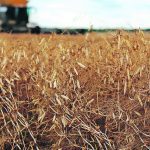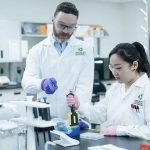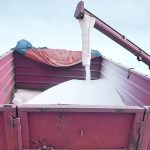PrairiesCan funding will assist in the continued growth of Saskatchewan’s ag research and manufacturing sectors.
Tag Archives Global Institute for Food Security

Saskatchewan agriculture sector receives federal funding
Funds through PrairiesCan will assist in the continued growth of the province’s ag research and manufacturing

Saskatchewan agriculture sector receives federal funding
Funds through PrairiesCan will assist in the continued growth of the province’s ag research and manufacturing
PrairiesCan funding will assist in the continued growth of Saskatchewan’s ag research and manufacturing sectors.

U.S. researchers confirm no-till, pulse benefits
U.S. Department of Agriculture study finds that a no-till wheat and pea rotation is the most environmentally sustainable
WINNIPEG — American scientists have confirmed what Canadian farmers already know — zero tillage is good for the environment and for crop production. U.S. Department of Agriculture researchers looked at the long-term effects of three cropping rotations in Montana — summer fallow-wheat, no-till continuous wheat and no-till wheat-pea. After crunching the data, they concluded that […] Read more
FCC invests in breeding innovation
REGINA — Farm Credit Canada has invested $5 million into the accelerated breeding program at the Global Institute for Food Security. Chief executive officer Justine Hendricks announced the funding at Canada’s Farm Show June 18, saying she was thrilled to announce the partnership. “The accelerated breeding program brings together cutting edge science and practical agricultural […] Read more

Ottawa appoints new deputy ag minister
REGINA — A new federal deputy minister of agriculture is in place this week after prime minister Justin Trudeau announced changes earlier in May. After just more than a year in the job, Stefanie Beck is returning to defence as the deputy there and Lawrence Hanson is moving to agriculture. It’s a quick change after […] Read more

Study shows Sask. growers sequester more carbon than others
REGINA — A study analyzing the carbon footprint of five key crops found Saskatchewan’s emissions are far lower than other leading producers. The Global Institute for Food Security released the results of its two-part study on canola, wheat, durum, field peas and lentils last week. The study was carried out with the provincial government. Olufunke […] Read more

On-farm research called agriculture’s best bet
Speakers at a recent conference say better communication needed so research gets into the hands of producers
There needs to be better communication between all segments of the agriculture industry so that agricultural research gets into the hands of producers, said Mark Redmond, chief executive officer of RDAR.
Mandatory fertilizer target rejected
Witnesses told the committee that even if the target to reduce emissions from fertilizer use by 30 percent from 2020 levels by 2030 is voluntary, it is another demand on producers at a time of uncertainty.



